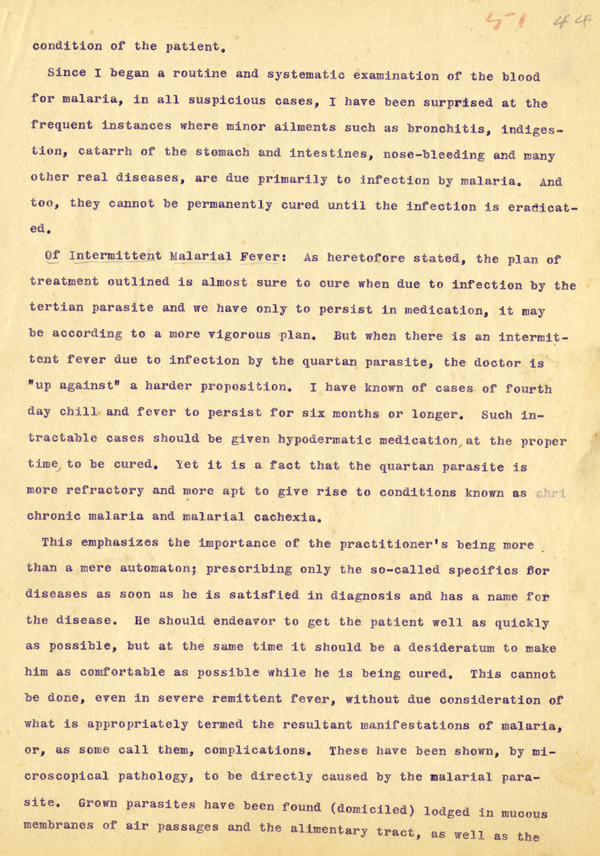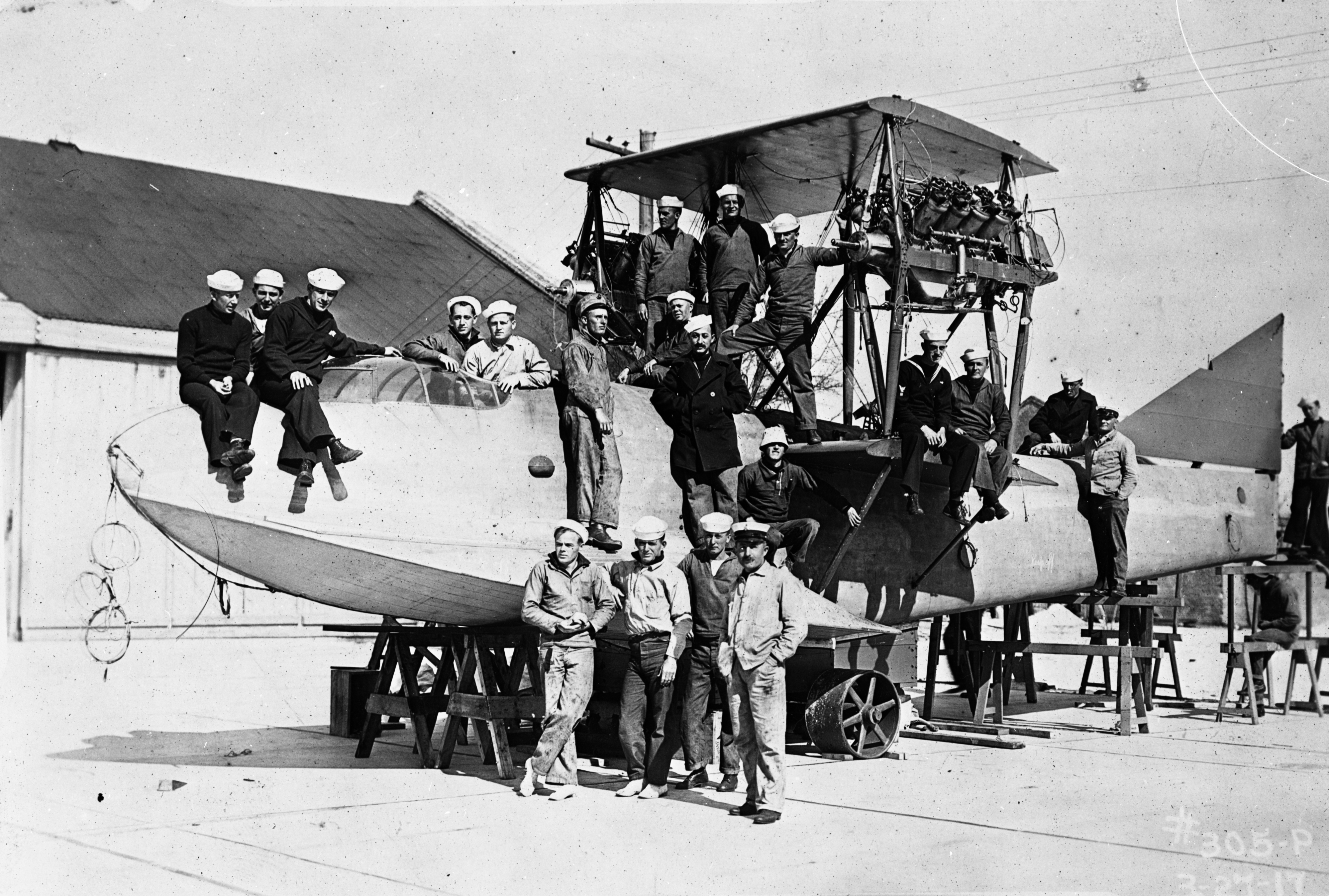Manuscript on Malaria by Dr. Alonzo Lashbrook Blalock, M. D., of Madison County, Florida.
Date: 1920-1950
Series: N2009-9 - Papers, ca. 1920-1950.
Personal and medical papers of Alonzo Lashbrook Blalock, a Madison, Florida, physician.
(Page 7 of 8)
Transcript
[page 7]
44
condition of the patient.
Since I began a routine and systematic examination of the blood
for malaria, in all suspicious cases, I have been surprised at the
frequent instances where minor ailments such as bronchitis, indiges-
tion, catarrh of the stomach and intestines, nose-bleeding and many
other real diseases, are due primarily to infection by malaria. And
too, they cannot be permanently cured until the infection is eradicate-
ed.
Of Intermittent Malarial Fever: As heretofore stated, the plan of
treatment outlined is almost sure to cure when due to infection by the
tertian parasite and we have only to persist in medication, it may
be according to a more vigorous plan. But when there is an intermit-
tent fever due to infection by the quartan parasite, the doctor is
"up against" a harder proposition. I have known of cases of fourth
day chill and fever to persist for six months or longer . Such in-
tractable cases should be given hypodermatic medication at the proper
time, to be cured. yet it is a fact that the quartan parasite is
more refractory and more apt to give rise to conditions known as
chronic malaria and malarial cachexia.
This emphasizes the importance of the practitioner's being more
than a mere automaton; prescribing only the so-called specifics for
disease as soon as he is satisfied in diagnosis and has a name for
the disease. He should endeavor to get the patient well as quickly
as possible, but at the same time it should be a desideratum to make
him as comfortable as possible while he is being cured. This cannot
be done, even in severe remittent fever, without due consideration of
what is appropriately termed the resultant manifestations of malaria,
or, as some call them, complications. These have been shown, by mi-
croscopical pathology, to be directly caused by the malarial para-
site. Grown parasites have been found (domiciled) lodged in mucous
membranes of air passages and the alimentary tract, as well as the

 Listen: The Latin Program
Listen: The Latin Program
